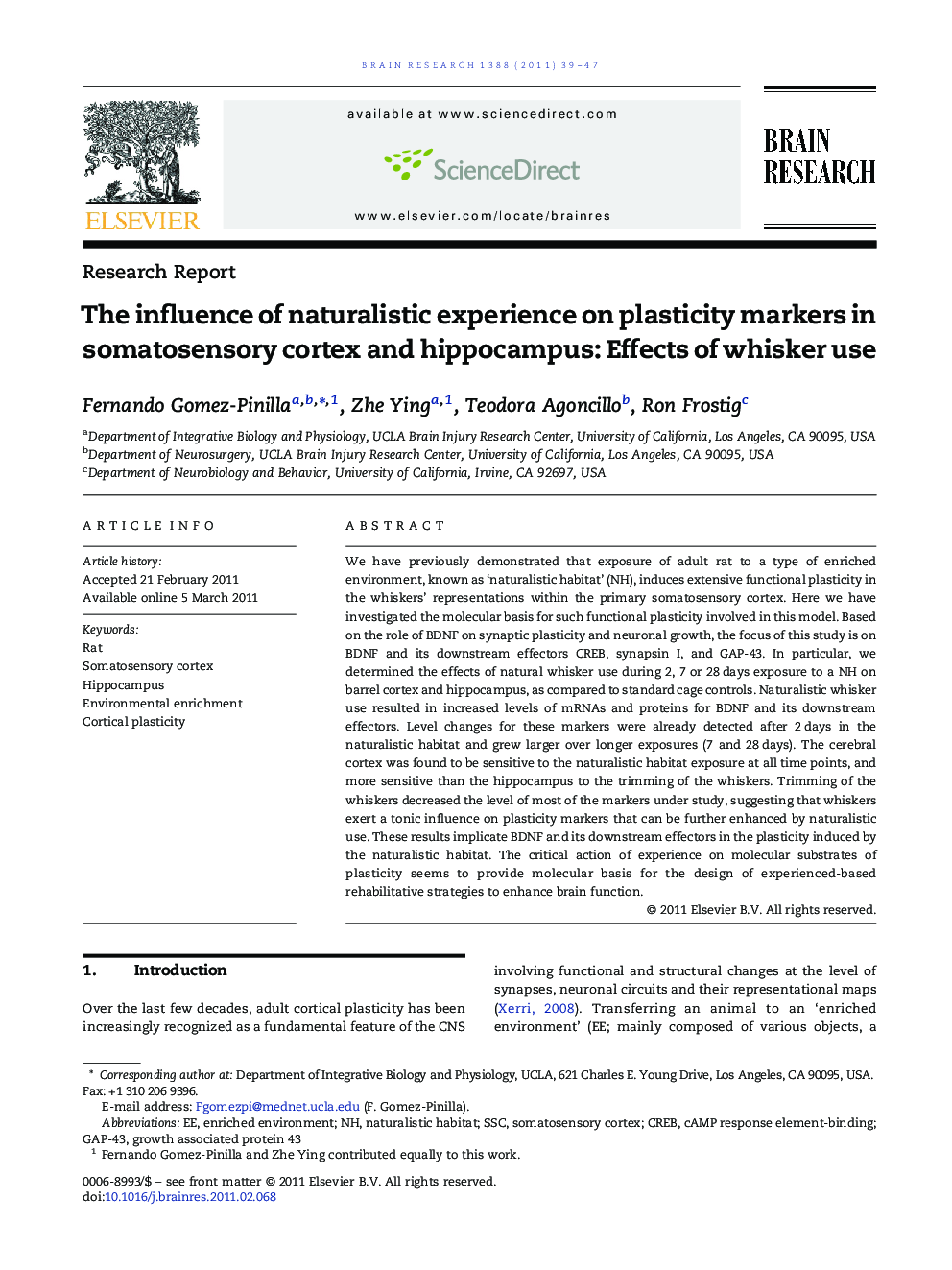| Article ID | Journal | Published Year | Pages | File Type |
|---|---|---|---|---|
| 6264856 | Brain Research | 2011 | 9 Pages |
We have previously demonstrated that exposure of adult rat to a type of enriched environment, known as 'naturalistic habitat' (NH), induces extensive functional plasticity in the whiskers' representations within the primary somatosensory cortex. Here we have investigated the molecular basis for such functional plasticity involved in this model. Based on the role of BDNF on synaptic plasticity and neuronal growth, the focus of this study is on BDNF and its downstream effectors CREB, synapsin I, and GAP-43. In particular, we determined the effects of natural whisker use during 2, 7 or 28Â days exposure to a NH on barrel cortex and hippocampus, as compared to standard cage controls. Naturalistic whisker use resulted in increased levels of mRNAs and proteins for BDNF and its downstream effectors. Level changes for these markers were already detected after 2Â days in the naturalistic habitat and grew larger over longer exposures (7 and 28Â days). The cerebral cortex was found to be sensitive to the naturalistic habitat exposure at all time points, and more sensitive than the hippocampus to the trimming of the whiskers. Trimming of the whiskers decreased the level of most of the markers under study, suggesting that whiskers exert a tonic influence on plasticity markers that can be further enhanced by naturalistic use. These results implicate BDNF and its downstream effectors in the plasticity induced by the naturalistic habitat. The critical action of experience on molecular substrates of plasticity seems to provide molecular basis for the design of experienced-based rehabilitative strategies to enhance brain function.
Research highlightsâºNaturalistic habitat stimulates cortical plasticity. âºWhisker use promotes elevation of BDNF. âºWhisker use involves plasticity in cerebral cortex and hypothalamus.
